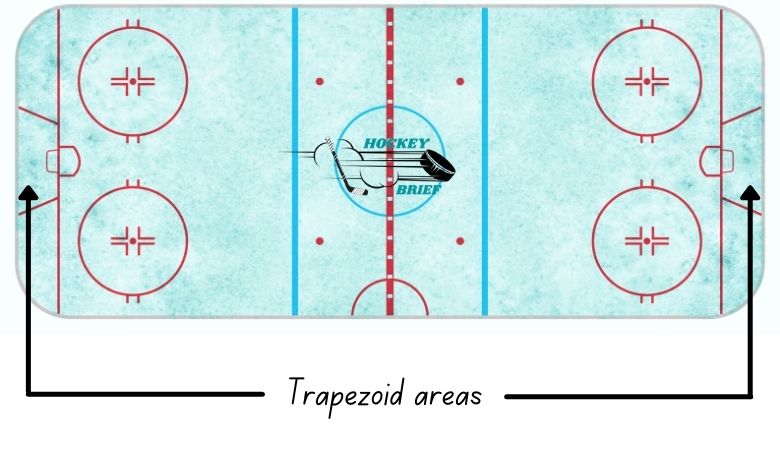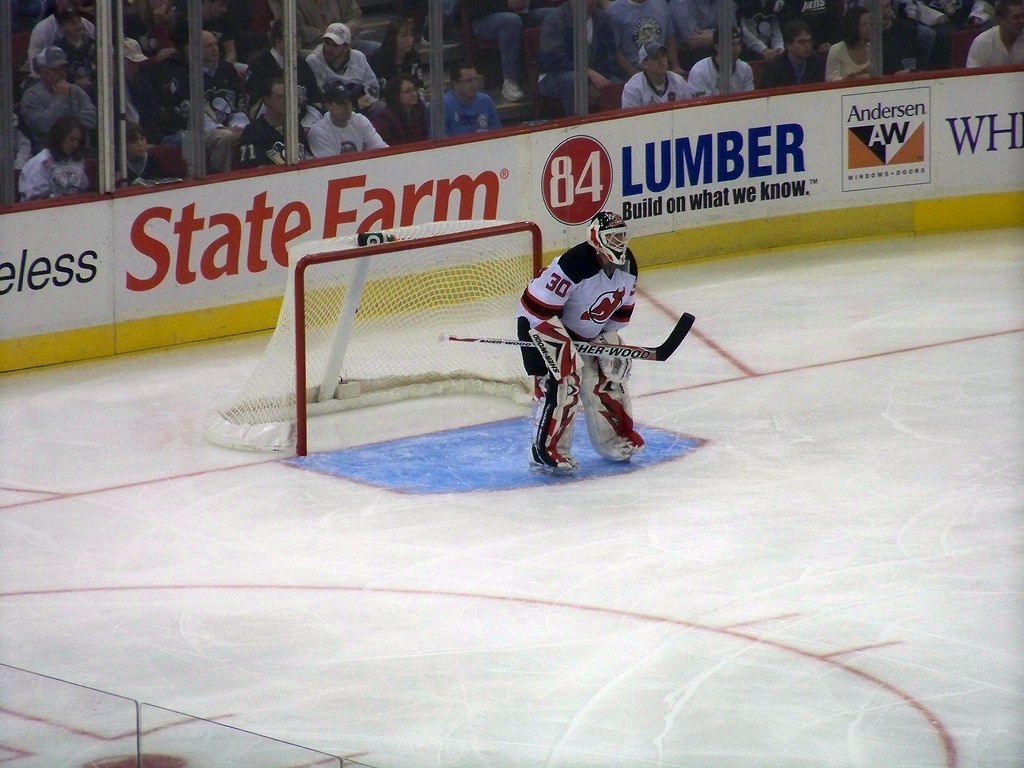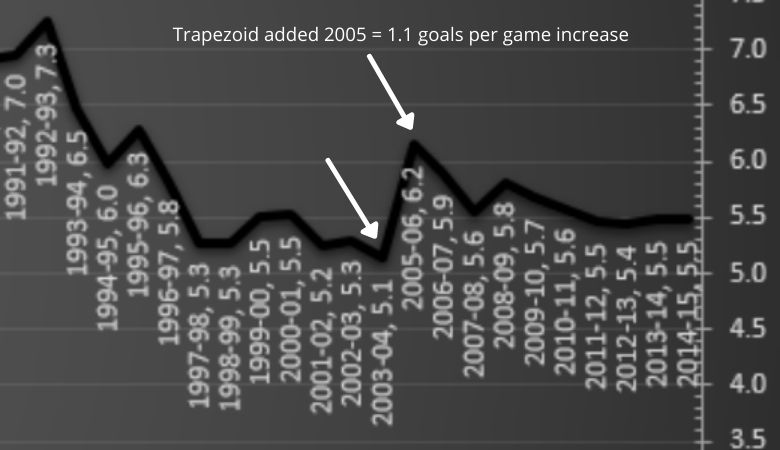There is a new term to add to your list of hockey vocabulary.
Trapezoid.
There used to be a time when a goaltender could leave the net to play the puck wherever they chose.
Those days are over.
The next time you are at a pro hockey game, take note of the lines on the ice at both ends behind the goal line.
The area behind the goal marked in the shape of a trapezoid is the area where the goaltender can play the puck. Playing the puck outside the trapezoid area and behind the goal line will result in a penalty to the goalie.

Size of the trapezoid
The trapezoid area extends to 28 feet along the boards behind the goaltender’s net. This is a large reduction in space for the goalie to play the puck without penalty and it certainly makes playing the puck more difficult.
When was the trapezoid introduced to ice hockey?
The trapezoid was introduced to the NHL in 2005.
What is the purpose of the trapezoid?
Prior to 2005, many NHL teams were playing a trap system which is a very defensive method of play that results in low-scoring games and is considered to be somewhat boring for the fans.
During the NHL lockout in 2004, several meetings were held to discuss the trap system of play and ways to eliminate low-scoring defensive games.
It was determined that the best way to avoid the trap was to eliminate the goaltender’s ability to play the puck in certain areas which can be very helpful to the defensemen.
The invention of the trapezoid provides for a more offensive style of play and allows for the forwards to retrieve the puck and set up more scoring chances.
Therefore the trapezoid reduces the trap system of play and low-scoring defensive games.
How does the trapezoid increase offense?
There are 2 main ways a team with the puck can create offense in the other team’s zone.
One way is to dump or shoot the puck into the zone after crossing the center ice line. This allows for the forwards to retrieve the puck faster than the defensemen.
The trapezoid will prevent the goaltender from playing the puck to a defenseman before the forward has a chance to retrieve it.
The other method of creating more scoring plays in the offensive zone is to carry the puck across the blue line and set up without dumping it in the zone.
The trapezoid will increase the chances of offense for the team shooting the puck into the zone giving them 2 viable options for gaining control of the puck in the offensive zone.
Can you hit a goalie in the trapezoid?
No, there is no area on the ice or any situation where the goalie can be hit by the opposing players. This includes the trapezoid area.
Martin Brodeur’s influence on the trapezoid

One of the best goaltenders to play in the NHL is the hall of fame goalie Martin Brodeur.
If you want to learn about playing the puck from a goalie perspective, Martin Brodeur was the best puck-handling goaltender in the game.
During the trap-playing years, Brodeur experienced it first hand. He played in many low-scoring games and has several shutouts to prove it.
Because of his excellent puck playing ability, the New Jersey Devils were one of the best teams to play the trap system.
Any pucks that were shot into their zone were quickly played by Brodeur and the offensive team struggled to set up any good scoring plays.
The NHL implemented the trapezoid to eliminate goalies like Brodeur playing the puck so often and effectively.
Since the 2005-2006 NHL season, the trapezoid has made a huge difference.
The trapezoid was introduced in 2005 after the NHL lockout in 2004.
Does the trapezoid work?
One of the best ways to prove that the trapezoid works is to look at the stats. Before the trapezoid rule was introduced, the average goals scored per game was lower than it is now.
The following chart shows the average goals scored per game per year.

In the 1992-93 season, the average was 7.3 goals scored per game. That number dropped to 5.1 during the 2003-04 season.
With the trapezoid coming into play in 2005, the average goals scored per game jumped up to 6.2 and has been above 5.5 every year since.
This is proof that the trapezoid is working for increasing offense and reducing low-scoring games.
Does the goalie serve the penalty for playing the puck outside of the trapezoid?
No, the goalie does not actually serve the penalty. One of the players on the ice at the time of the penalty will serve the 2 minute time in the penalty box for the goalie.

